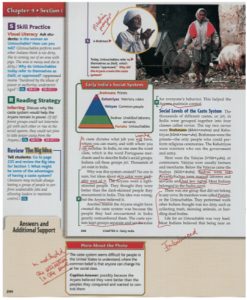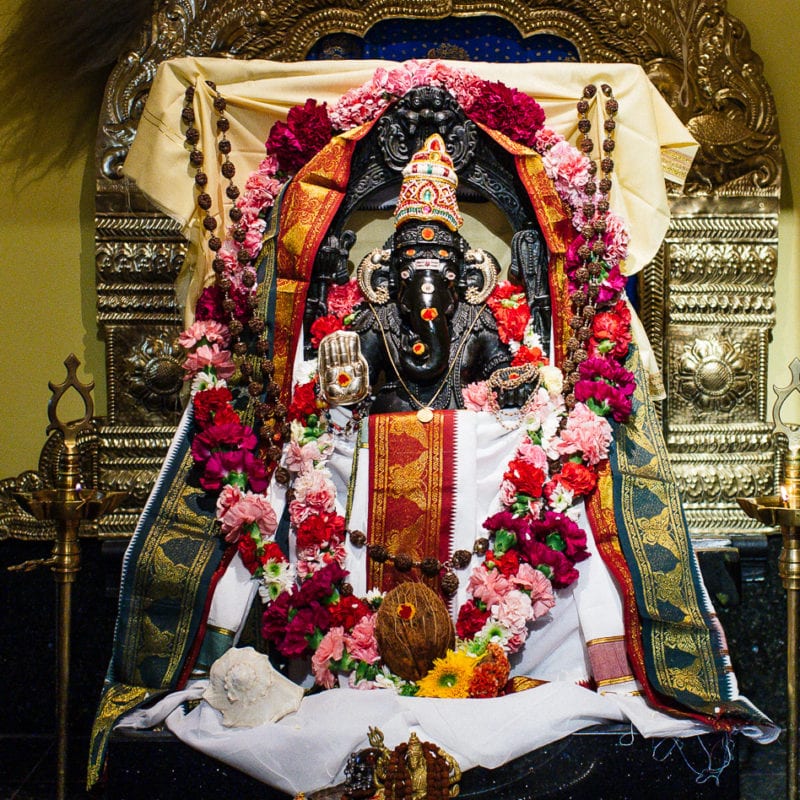
Sometimes, even the craziest processes can lead to positive outcomes, as demonstrated recently by the Texas State Board of Education’s recent controversial vote to adopt new instructional materials for 2015.
While the board’s vote to adopt textbooks undoubtedly has alarmed many public education advocates across the state (as well as around the country), the irony of the adoption process is that it also allowed historically marginalized groups to provide constructive feedback. For groups like the Hindu American Foundation, the vote allowed for transformational changes to the way Hinduism is depicted in the state’s textbooks.
For starters, it should be noted that the way Texas adopts textbooks doesn’t follow a particular systematic strategy. Publishers submit their materials, and the Texas Education Agency appoints reviewers to see if the materials align with the Texas Essential Knowledge Standards (TEKS). But the real movers and shakers in content are the elected members of the Board of Education, including several who have made remarks questioning climate change, urging publishers to endorse “free market” economics, and pushing for a Christianization of textbooks.
Groups such as the Texas Freedom Network and Americans United have been fighting for accurate and non-ideological instructional materials for years, and it’s a credit to them that the final changes in the textbooks reflected a strong push led by TFN to include the feedback of historians and religious scholars. One professor noted in a September public hearing that the way Moses is introduced in history and government textbooks would lead Texas students to believe that Moses “was the first American.”
This is deeply problematic and reflective of an ideological push across the country to blur the lines between church and state, putting educators in the crossfire. While Texas might be unique in the way its board influences decisions on textbooks, it’s not in a vacuum, and the push to re-write aspects of history can be felt in other parts of the country.
With all of that being said, the Texas vote does still represent a victory for the Hindu American community because it allowed for Hindu Americans in Texas to become engaged with a process they had previously been aloof to or unaware of. As one board member told me, the Hindu American participation in this process follows the trend of other groups representing the Jewish, Muslim, and Sikh communities being involved for much longer periods.
The changes that were ultimately adopted are game-changing because they provide for a constructive understanding of Hinduism, away from the stereotypical “caste, cows, and karma” narrative that so many of us were accustomed to reading when we were in school (and sadly, many of our children still have to read). For generations, Hinduism was limited to the chapter on ancient India, disappearing from further mention in many textbooks after the introduction of Buddhism. Moreover, Hinduism became conflated with Indian social practice, giving teachers and students no actual understanding of what underpins Hindu philosophy.
Most of the changes made were correcting factual errors (for example, Slumdog Millionaire is not a Bollywood movie, as one publisher claimed), but others involved a broader understanding of historical scholarship. There are passages that reflect the disputed origins of ancient Indian civilizations; the nuancing of the varna and jati systems that have for so long been mistakenly conflated to mean a static caste system intrinsic to Hinduism; and explanations of what terms like karma, dharma, or moksha actually mean. While the changes are still just scratching the surface of what needs to be done to better understand Hinduism in American classrooms, there were several important long-term outcomes:
Engagement from the academic community: For years, scholars of Hinduism and other Dharmic traditions have complained that textbook content has been inaccurate and downright lousy. HAF engaged with a number of scholars to review the proposed content so that they could provide their feedback directly. That way, academicians were able to offer feedback on how they would improve the way Hinduism is more accurately depicted. Additionally, some of the publishers reached out to get more academic consultants whose expertise is in South Asian history or Hinduism, since the majority of textbooks are still overwhelmingly shaped by scholars whose expertise is outside those areas.
Involvement from Texas residents: HAF was able to be involved in the process because many Hindu Texans are passionate about accuracy in textbooks. Texas has the second-largest population of Hindus in the United States, and education is a galvanizing force in the community, regardless of generation or cultural background. There were many enthusiastic volunteers ranging from schoolteachers (whose expertise is social studies) and academics to retired doctors who just wanted to see a more accurate depiction of their faith in textbooks. Without grassroots awareness, these changes likely would have been difficult to make.
Coalition building efforts: It should be noted that even in a flawed process such as the Texas vote, coalitions are critical. Groups like TFN helped to educate marginalized communities such as Hindus about what the adoption process meant. Even most publishers – perhaps aware of the unpredictability of the process – wanted to make sure that their content was as accurate as possible, and were willing to take the constructive feedback on making their materials more factually correct.
The Texas vote, while flawed, is indeed a building block to help pave the way for a more constructive understanding of Hinduism that is on par with other religions discussed in textbooks. There’s still a long way to go, but we as a community can use this as a platform for finding our voice in education. That in of itself is worth celebrating.








































